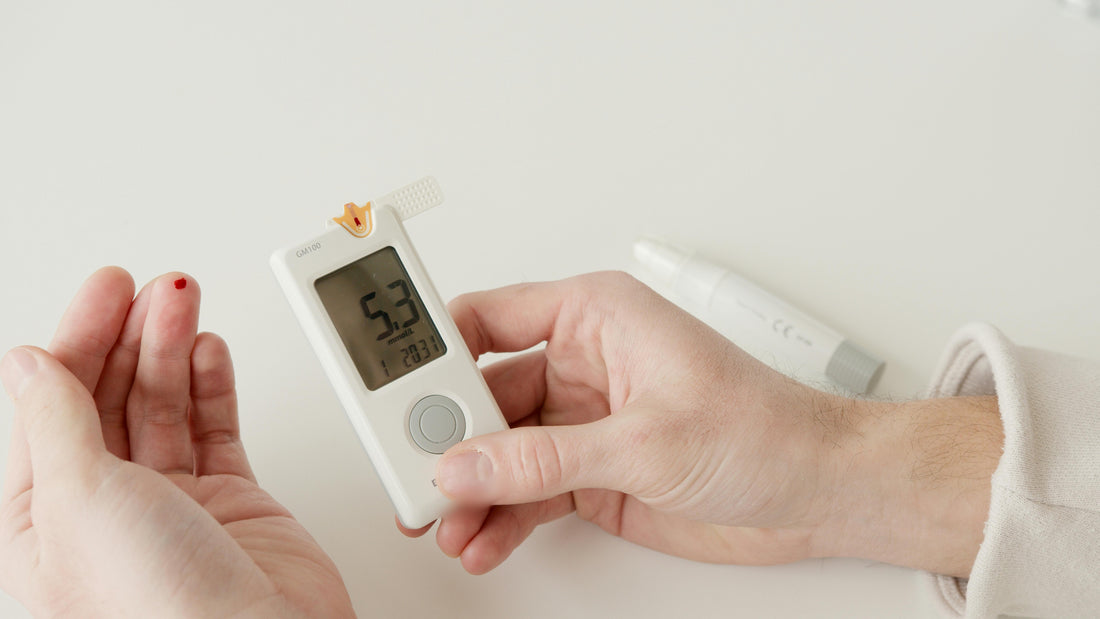
Why Women Handle Blood Sugar Better Than Men
Share
Introduction: What is Blood Sugar and Why It Matters
Blood sugar, or glucose, is the main source of energy for our bodies. After we eat, carbohydrates from our food are broken down into glucose, which enters the bloodstream. To keep blood sugar levels balanced, the hormone insulin helps move glucose from the blood into cells, especially in muscle and fat tissue, where it’s either used for energy or stored for later. When this process doesn’t work well, it can lead to health problems like type 2 diabetes.
A recent study from the University of Copenhagen explored how men and women differ in how their bodies use and store blood sugar. The results were surprising—and could help us better understand health and disease prevention.
More Than Just Muscle: How Women’s Bodies Process Glucose Differently
Most people think muscles are the key players in managing blood sugar, and that’s partly true. Muscle tissue uses a lot of glucose, especially during physical activity. But this study found that fat tissue (adipose tissue) also plays a major role—and women seem to be better at using it to manage blood sugar.
In the study, researchers tested healthy young men and women who had similar body weights and fitness levels. They found that women had a higher amount of key proteins in both their muscles and fat tissue. These proteins help move glucose into cells and process it once it’s inside.
The Key Differences in Women’s Fat and Muscle Tissues
Women had more of the protein GLUT4, which helps transport glucose into cells. They also had higher levels of AKT2 and insulin receptors, which are involved in insulin signaling. These differences were found in both fat tissue and muscles.
In muscle tissue, women also had more of the enzymes hexokinase II (HKII) and PDH-E1α, which help break down glucose so it can be used for energy. This means that once glucose gets into a woman’s muscle cell, it can be processed more efficiently.
Interestingly, women’s muscle fibers were more oxidative (meaning they burn fat and sugar more efficiently) and had more capillaries, or tiny blood vessels, which help deliver nutrients to the cells.
Better Glucose Tolerance Despite Less Muscle Mass
One surprising finding was that even though women generally had less muscle mass than men, they still showed better overall blood sugar control. This was tested using methods like glucose tolerance tests and insulin sensitivity tests.
In fact, women with higher body fat percentages still managed to handle glucose better than men who had more lean muscle. The study suggests that women’s fat tissue is not just for storing energy—it actively helps the body regulate blood sugar.
The Role of Hormones and Adiponectin
Hormones likely play a big part in these differences. For example, women had higher levels of a hormone called adiponectin, which is known to improve insulin sensitivity. This could help explain why women’s fat and muscle tissues respond better to insulin.
Estrogen may also influence how these proteins work, though this study focused only on premenopausal women. More research is needed to see how these differences change with age or after menopause.
Why This Matters
Understanding how men and women process blood sugar differently can help improve treatments for conditions like diabetes and obesity. It also highlights the importance of studying both sexes in medical research, as one-size-fits-all approaches might miss key differences.
For women, it’s encouraging to know that their bodies may be naturally better equipped to manage blood sugar, even with higher fat percentages. For men, this research could lead to new ways to support glucose control through diet, exercise, or medication.
Conclusion
This study shows that women may have a biological advantage when it comes to handling blood sugar, thanks to key proteins and hormone levels that help process glucose more efficiently. While both men and women can benefit from healthy habits like regular exercise and balanced diets, recognizing these natural differences could lead to better, more personalized healthcare for everyone.
